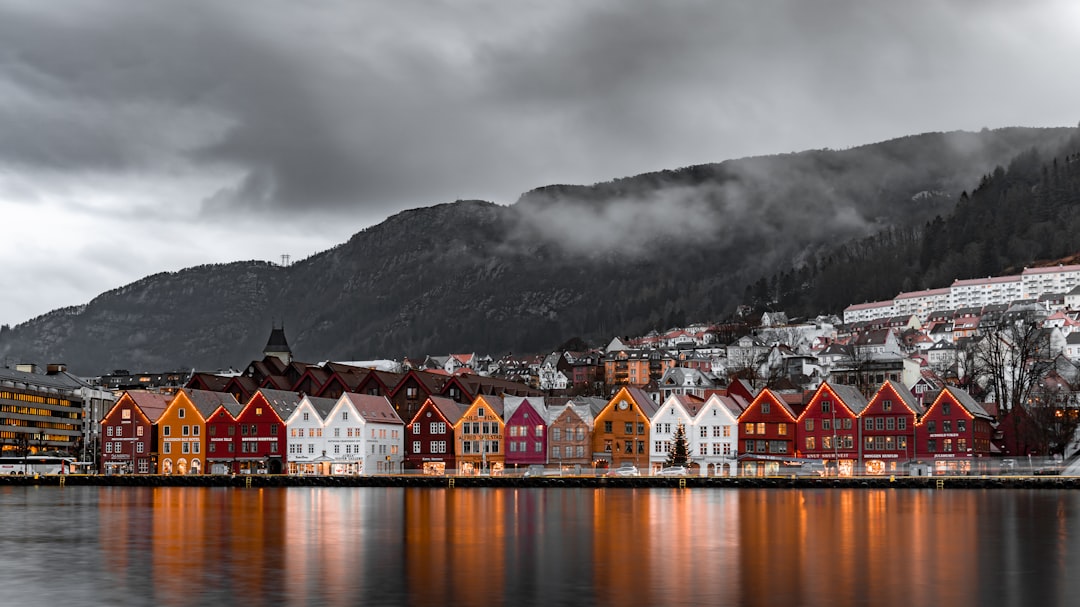Navigating the roads of Norway can be a delightful experience, especially for those who appreciate the stunning landscapes and picturesque towns that dot the country. However, understanding the road signs is crucial for ensuring safety and compliance with local traffic regulations. Norwegian road signs are designed to be clear and informative, providing essential information to drivers, cyclists, and pedestrians alike.
This article aims to explore the various categories of road signs in Norway, offering insights into their meanings and significance. The Norwegian road sign system is largely influenced by international standards, making it easier for visitors from other countries to comprehend. The signs are typically characterised by their distinctive shapes and colours, which convey specific messages.
From warning signs that alert drivers to potential hazards to regulatory signs that dictate the rules of the road, each sign plays a vital role in maintaining order and safety on Norwegian roads. As we delve into the different types of road signs, we will uncover the importance of understanding these symbols for anyone travelling through this beautiful Scandinavian nation. Book your 1-hour strategy session with Norway Relocation Group.
Summary
- Norwegian road signs use a combination of symbols, colours, and shapes to convey important information to drivers.
- Warning signs in Norway use symbols such as triangles and exclamation marks to alert drivers to potential hazards like sharp curves or pedestrian crossings.
- Regulatory signs in Norway inform drivers of the rules of the road, including speed limits, no entry zones, and parking restrictions.
- Information signs help drivers find their way around by providing directions to places of interest such as hospitals, airports, and tourist attractions.
- Priority signs indicate right of way at intersections and roundabouts, with symbols like triangles and arrows guiding drivers on who has precedence.
Warning Signs: Understanding the Symbols and Meanings
Warning signs in Norway are designed to alert drivers to potential dangers ahead. These signs are typically triangular in shape and feature a bold red border with a white background, often accompanied by a black symbol that conveys the specific hazard. For instance, a sign depicting a moose signifies the possibility of wildlife crossing the road, a common occurrence in rural areas.
Understanding these warning signs is essential for drivers, as they provide crucial information that can help prevent accidents. In addition to wildlife warnings, there are various other warning signs that indicate different hazards. For example, a sign showing a slippery road surface warns drivers to exercise caution during adverse weather conditions, such as rain or snow.
Similarly, signs indicating sharp bends or steep gradients are vital for ensuring that drivers adjust their speed accordingly. By familiarising oneself with these warning signs, drivers can navigate Norwegian roads more safely and confidently.
Regulatory Signs: Knowing the Rules of the Road

Regulatory signs are an integral part of Norway’s traffic system, as they inform drivers of the rules they must adhere to while on the road. These signs are typically circular in shape and feature a red border with a white or blue background, depending on the specific regulation being enforced. For example, a sign with a red circle and a white centre indicates a prohibition, such as no entry or no parking.
Understanding these signs is crucial for avoiding fines and ensuring compliance with local traffic laws. Speed limit signs are among the most important regulatory signs that drivers encounter on Norwegian roads. These signs indicate the maximum speed allowed in a particular area, which can vary significantly depending on factors such as road type and location.
In urban areas, speed limits are generally lower to ensure pedestrian safety, while rural roads may allow for higher speeds. Familiarising oneself with these speed limits is essential for maintaining safety and avoiding penalties.
Information Signs: Finding Your Way Around
Information signs play a vital role in helping drivers navigate Norway’s extensive road network. These signs provide essential details about distances to various destinations, directions to nearby towns, and points of interest along the route. Typically rectangular in shape and featuring blue or green backgrounds, information signs are designed to be easily readable from a distance.
One of the most common types of information signs is the directional sign, which indicates the way to major cities or tourist attractions. These signs often include distances in kilometres, allowing drivers to gauge how far they have to travel. Additionally, information signs may also highlight services available along the route, such as fuel stations or rest areas.
By paying attention to these signs, drivers can ensure they remain on track and make informed decisions about their journey.
Priority Signs: Navigating Right of Way
Priority signs are crucial for determining right of way at intersections and junctions throughout Norway. These signs help prevent confusion among drivers and ensure smooth traffic flow. The most common priority sign is the yield sign, which instructs drivers to give way to oncoming traffic or pedestrians before proceeding.
This sign is typically triangular with a white background and a red border. Another important priority sign is the stop sign, which requires drivers to come to a complete halt before entering an intersection. This sign is particularly vital at busy junctions where visibility may be limited.
Understanding these priority signs is essential for maintaining safety on the roads and preventing accidents at intersections.
Road Markings: Deciphering Lines and Symbols

In addition to road signs, markings on the road surface play a significant role in guiding drivers and ensuring safe navigation. These markings include solid lines, dashed lines, arrows, and symbols that convey important information about lane usage and traffic rules. For instance, solid lines indicate that overtaking is prohibited, while dashed lines signify that it is safe to change lanes when clear.
Arrows painted on the road surface guide drivers in terms of direction at intersections or roundabouts. These markings help clarify which lanes are designated for turning or continuing straight ahead. By paying attention to road markings, drivers can make informed decisions about their movements on the road and contribute to overall traffic safety.
Understanding Parking Signs and Regulations
Parking regulations are an essential aspect of urban driving in Norway, where space can be limited in city centres. Parking signs provide crucial information about where vehicles can be parked legally and any associated restrictions or fees. These signs may indicate designated parking areas, time limits for parking, or specific days when parking is prohibited.
In many urban areas, parking is regulated by zones that require payment during certain hours. Signs indicating paid parking zones typically feature clear instructions on how to pay and any applicable time limits. Understanding these parking regulations is vital for avoiding fines and ensuring compliance with local laws while exploring Norway’s cities.
Road Works and Temporary Signs: Knowing What to Expect
Road works are common in Norway as authorities strive to maintain and improve infrastructure. During these periods, temporary signs are erected to inform drivers of changes in traffic patterns or potential hazards due to construction activities. These signs may include detour instructions or warnings about reduced speed limits in work zones.
It is essential for drivers to remain vigilant when encountering temporary signs related to road works. Adhering to these instructions not only ensures personal safety but also contributes to the efficiency of construction efforts. By being aware of potential delays or changes in routes due to road works, drivers can plan their journeys more effectively.
Motorway Signs: Navigating Highways and Motor Roads
Motorway signs are specifically designed for high-speed travel on Norway’s extensive motorway network. These signs provide critical information about speed limits, upcoming exits, and services available along the route. Typically larger than standard road signs, motorway signs are designed for visibility at high speeds.
One key feature of motorway signage is the use of electronic message boards that display real-time information about traffic conditions or incidents ahead. These boards can alert drivers to accidents or delays, allowing them to adjust their routes accordingly. Understanding motorway signage is essential for safe navigation on Norway’s highways.
Pedestrian and Cyclist Signs: Understanding Shared Spaces
As cycling and walking become increasingly popular modes of transport in Norway, understanding pedestrian and cyclist signs is essential for ensuring safety in shared spaces. These signs indicate designated paths for pedestrians and cyclists, as well as areas where they may need to yield to vehicles. For instance, pedestrian crossing signs alert drivers to areas where pedestrians may be crossing the road, while cyclist symbols indicate dedicated bike lanes.
By recognising these signs, both drivers and non-motorised users can coexist safely on Norway’s roads.
Emergency and Service Signs: Knowing Where to Find Help
In case of emergencies or breakdowns while travelling through Norway, understanding emergency and service signs is crucial for finding assistance quickly. These signs typically feature symbols indicating nearby services such as fuel stations, hospitals, or roadside assistance. Emergency services are well-marked throughout Norway, with clear signage directing individuals towards help when needed.
Familiarising oneself with these emergency signs can provide peace of mind while exploring remote areas or unfamiliar regions. In conclusion, understanding Norwegian road signs is essential for anyone navigating the country’s diverse landscapes and urban environments. From warning signs that alert drivers to potential hazards to regulatory signs that dictate rules of the road, each sign plays a vital role in ensuring safety and compliance with local traffic laws.
By familiarising oneself with these symbols and their meanings, both residents and visitors can enjoy a safer driving experience in Norway. For those looking to immerse themselves further into Norwegian culture while enhancing their language skills—particularly useful when interpreting road signs—consider enrolling in courses at the NLS Norwegian Language School in Oslo. The school offers comprehensive programmes tailored for all levels of learners, providing an excellent opportunity not only to learn the language but also to understand cultural nuances that enrich your experience in Norway.
Whether you’re planning a short visit or considering a longer stay, mastering Norwegian will undoubtedly enhance your journey through this beautiful country.
Speak Norwegian with confidence. Enroll in a class at the NLS Norwegian Language School now.

